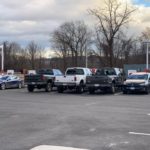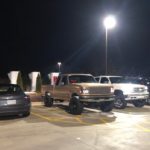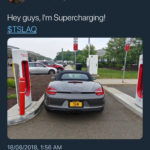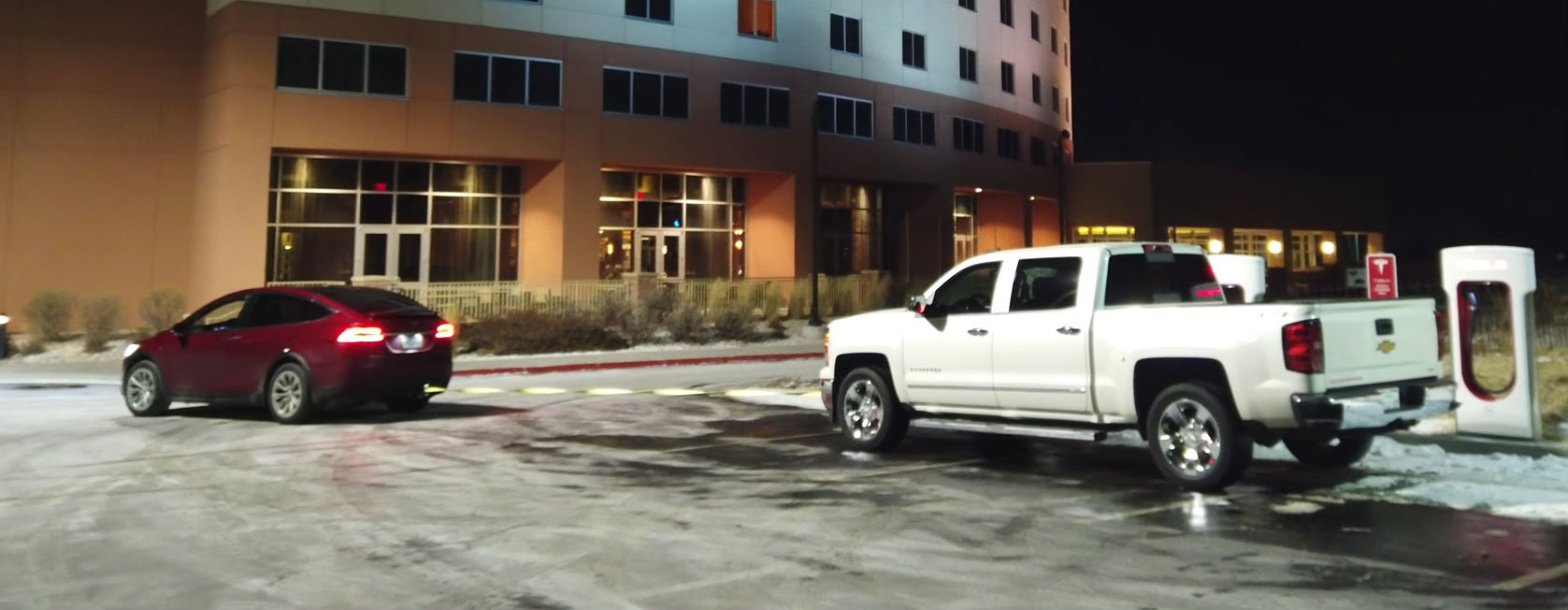
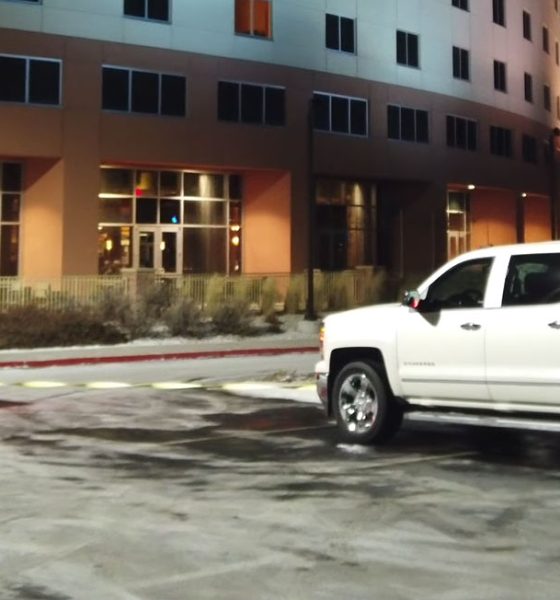
News
Tesla Model X easily tows Chevy Silverado 1500 from Supercharger in ‘De-ICE-ing’ feat
There is no denying that Tesla’s electric cars are bound to be polarizing for a long time to come. Operating independent of gasoline, the vehicles are practically a stand against the fossil fuel industry. Being sleek, powerful and quick, the cars also go against the notion that electric cars are boring and slow. Unfortunately, as Teslas become more commonplace with the ramp of the Model 3, the vehicles appear to be attracting more resistance from the anti-EV community as well.
Last month, several members of the Tesla community went online to share their experiences with a practice colloquially known as “ICE-ing,” which involves gasoline and diesel powered vehicles blocking access to a Supercharger. While some of these incidents might be the result of an honest mistake, some ICE-ing incidents are undoubtedly intentional. Noted TSLA short Mark Spiegel, for example, has proudly shown off his Porsche Boxster S blocking a Supercharger stall earlier this year. Tesla owners u/Leicina and u/BarcodeOfficial from the r/TeslaMotors subreddit uploaded photos of stations being intentionally blocked by pickup truck drivers as well. As noted by the Tesla owners, some of the truck drivers were even verbally harassing EV owners.
- Pickup trucks ICE-ing a Tesla Supercharger. (Photo: BarcodeOfficial/Reddit)
- Pickup trucks ICE-ing a Tesla Supercharger. (Photo: Leicina/Reddit)
- Tesla short-seller Mark Spiegel blocking a Supercharger station. (Photo: Mark Spiegel/Twitter)
Amidst these annoying (and disturbing to a point) incidents, one thing that these pickup truck drivers could easily forget is that Tesla’s electric cars are actually loaded with a lot of power, and they have the weight to back it up. Being equipped with electric motors, Tesla’s vehicles have a lot of torque, and thanks to their massive battery packs, they are also very heavy. The Tesla Model X, for example, was at its lightest at 5,072 pounds, and that was when the company was still selling the 60D variant. Thus, in theory, a Tesla should be able to tow an offending vehicle out of a Supercharger station if needed, or as a last resort in the event of an emergency.
Such a theory was recently put to the test by Tesla Model X 90D owner Patrick Lawson. In a video posted on his Tesla Trip YouTube channel, Patrick opted to see if his all-electric SUV would be able to tow a full-sized pickup truck out of a Supercharger. Fortunately for the Model X owner, his sister recently acquired a 2014 Chevrolet 1500 Silverado, and she was more than willing to see if her 5,104-lb pickup could be towed by the electric vehicle. Patrick opted to conduct the experiment at an empty Supercharger in Loveland, CO, and to make the scenario even more challenging; he opted to engage the truck’s emergency brake, simulating a situation where a driver intentionally leaves a vehicle parked for an extended period of time.
In the video, Patrick could be seen hooking up his Model X to the Chevy Silverado 1500, then slowly driving away, pickup truck in tow. From what could be seen in the experiment, the entire ‘De-ICE-ing” process was effortless for the all-electric SUV, with Patrick noting in a conversation with Teslarati that he had to “show constraint” as he “gently pressed on the Model X’s accelerator” to ensure that both vehicles don’t get damaged. The Model X did not have to engage Slip Start before it towed the Silverado as well, and no warnings were present on the vehicle while it was pulling the full-sized pickup. Ultimately, Patrick noted that entire “De-ICE-ing” process only took around five minutes.
With the ramp of the Model 3, Tesla’s electric cars are becoming more prevalent. Unfortunately, acts like ICE-ing Superchargers would likely continue as well. And it’s not just ICE-ing either. Some Tesla owners, among them racecar driver Leilani Münter, have noted on Twitter that she had been “coal-rolled” multiple times while driving in her Tesla. In a tweet, Elon Musk described these situations as “bizarre.”
Inasmuch as ICE-ing, or coal-rolling for that matter, is an annoyance that could escalate into something more dangerous, there is very little that the anti-EV crowd can do to stop the spread of electric cars. Countries across the globe such as China, which are large markets for the auto industry, are shifting to electric vehicles, and so are regions like Europe. Thanks to cars like the Model 3, electric vehicles are becoming more and more attainable as well. Coupled with a grid that is shifting towards cleaner energy, it would only be a matter of time before the auto industry shifts completely to electric.
Watch Patrick Lawson’s video of his Tesla Model X “de-ICE-ing” a Supercharger below.

Elon Musk
Elon Musk’s X will start using a Tesla-like software update strategy
The initiative seems designed to accelerate updates to the social media platform, while maintaining maximum transparency.

Elon Musk’s social media platform X will adopt a Tesla-esque approach to software updates for its algorithm.
The initiative seems designed to accelerate updates to the social media platform, while maintaining maximum transparency.
X’s updates to its updates
As per Musk in a post on X, the social media company will be making a new algorithm to determine what organic and advertising posts are recommended to users. These updates would then be repeated every four weeks.
“We will make the new 𝕏 algorithm, including all code used to determine what organic and advertising posts are recommended to users, open source in 7 days. This will be repeated every 4 weeks, with comprehensive developer notes, to help you understand what changed,” Musk wrote in his post.
The initiative somewhat mirrors Tesla’s over-the-air update model, where vehicle software is regularly refined and pushed to users with detailed release notes. This should allow users to better understand the details of X’s every update and foster a healthy feedback loop for the social media platform.
xAI and X
X, formerly Twitter, has been acquired by Elon Musk’s artificial intelligence startup, xAI last year. Since then, xAI has seen a rapid rise in valuation. Following the company’s the company’s upsized $20 billion Series E funding round, estimates now suggest that xAI is worth tens about $230 to $235 billion. That’s several times larger than Tesla when Elon Musk received his controversial 2018 CEO Performance Award.
As per xAI, the Series E funding round attracted a diverse group of investors, including Valor Equity Partners, Stepstone Group, Fidelity Management & Research Company, Qatar Investment Authority, MGX, and Baron Capital Group, among others. Strategic partners NVIDIA and Cisco Investments also continued support for building the world’s largest GPU clusters.
News
Tesla FSD Supervised wins MotorTrend’s Best Driver Assistance Award
The decision marks a notable reversal for the publication from prior years, with judges citing major real-world improvements that pushed Tesla’s latest FSD software ahead of every competing ADAS system.

Tesla’s Full Self-Driving (Supervised) system has been named the best driver-assistance technology on the market, earning top honors at the 2026 MotorTrend Best Tech Awards.
The decision marks a notable reversal for the publication from prior years, with judges citing major real-world improvements that pushed Tesla’s latest FSD software ahead of every competing ADAS system. And it wasn’t even close.
MotorTrend reverses course
MotorTrend awarded Tesla FSD (Supervised) its 2026 Best Tech Driver Assistance title after extensive testing of the latest v14 software. The publication acknowledged that it had previously criticized earlier versions of FSD for erratic behavior and near-miss incidents, ultimately favoring rivals such as GM’s Super Cruise in earlier evaluations.
According to MotorTrend, the newest iteration of FSD resolved many of those shortcomings. Testers said v14 showed far smoother behavior in complex urban scenarios, including unprotected left turns, traffic circles, emergency vehicles, and dense city streets. While the system still requires constant driver supervision, judges concluded that no other advanced driver-assistance system currently matches its breadth of capability.
Unlike rival systems that rely on combinations of cameras, radar, lidar, and mapped highways, Tesla’s FSD operates using a camera-only approach and is capable of driving on city streets, rural roads, and freeways. MotorTrend stated that pure utility, the ability to handle nearly all road types, ultimately separated FSD from competitors like Ford BlueCruise, GM Super Cruise, and BMW’s Highway Assistant.
High cost and high capability
MotorTrend also addressed FSD’s pricing, which remains significantly higher than rival systems. Tesla currently charges $8,000 for a one-time purchase or $99 per month for a subscription, compared with far lower upfront and subscription costs from other automakers. The publication noted that the premium is justified given FSD’s unmatched scope and continuous software evolution.
Safety remained a central focus of the evaluation. While testers reported collision-free operation over thousands of miles, they noted ongoing concerns around FSD’s configurable driving modes, including options that allow aggressive driving and speeds beyond posted limits. MotorTrend emphasized that, like all Level 2 systems, FSD still depends on a fully attentive human driver at all times.
Despite those caveats, the publication concluded that Tesla’s rapid software progress fundamentally reshaped the competitive landscape. For drivers seeking the most capable hands-on driver-assistance system available today, MotorTrend concluded Tesla FSD (Supervised) now stands alone at the top.
News
Elon Musk’s Grokipedia surges to 5.6M articles, almost 79% of English Wikipedia
The explosive growth marks a major milestone for the AI-powered online encyclopedia, which was launched by Elon Musk’s xAI just months ago.

Elon Musk’s Grokipedia has grown to an impressive 5,615,201 articles as of today, closing in on 79% of the English Wikipedia’s current total of 7,119,376 articles.
The explosive growth marks a major milestone for the AI-powered online encyclopedia, which was launched by Elon Musk’s xAI just months ago. Needless to say, it would only be a matter of time before Grokipedia exceeds English Wikipedia in sheer volume.
Grokipedia’s rapid growth
xAI’s vision for Grokipedia emphasizes neutrality, while Grok’s reasoning capabilities allow for fast drafting and fact-checking. When Elon Musk announced the initiative in late September 2025, he noted that Grokipedia would be an improvement to Wikipedia because it would be designed to avoid bias.
At the time, Musk noted that Grokipedia “is a necessary step towards the xAI goal of understanding the Universe.”
Grokipedia was launched in late October, and while xAI was careful to list it only as Version 0.1 at the time, the online encyclopedia immediately earned praise. Wikipedia co-founder Larry Sanger highlighted the project’s innovative approach, noting how it leverages AI to fill knowledge gaps and enable rapid updates. Netizens also observed how Grokipedia tends to present articles in a more objective manner compared to Wikipedia, which is edited by humans.
Elon Musk’s ambitious plans
With 5,615,201 total articles, Grokipedia has now grown to almost 79% of English Wikipedia’s article base. This is incredibly quick, though Grokipedia remains text-only for now. xAI, for its part, has now updated the online encyclopedia’s iteration to v0.2.
Elon Musk has shared bold ideas for Grokipedia, including sending a record of the entire knowledge base to space as part of xAI’s mission to preserve and expand human understanding. At some point, Musk stated that Grokipedia will be renamed to Encyclopedia Galactica, and it will be sent to the cosmos.
“When Grokipedia is good enough (long way to go), we will change the name to Encyclopedia Galactica. It will be an open source distillation of all knowledge, including audio, images and video. Join xAI to help build the sci-fi version of the Library of Alexandria!” Musk wrote, adding in a later post that “Copies will be etched in stone and sent to the Moon, Mars and beyond. This time, it will not be lost.”
